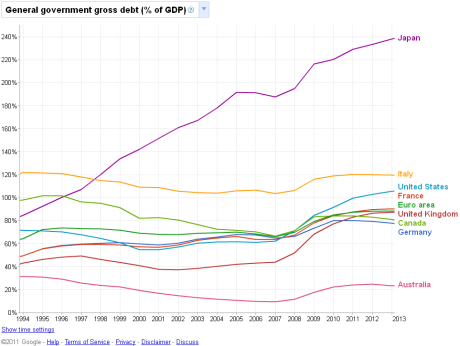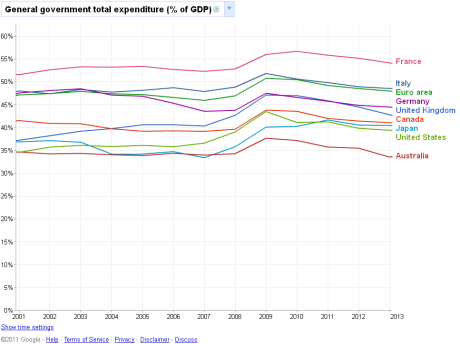If you know anything about me, you probably know that I watch the polls for national elections like a watch college football: obsessively. While polling is an imperfect science, it offers the best glimpse into an electoral result before people vote. Politicians dedicate massive resources to poll constituents, either by conducting polls in house or by contracting polling organizations. Polls often determine how and what a candidate will speak about in public addresses, or what promises might be made on the campaign trail. It should come as no surprise that Governor Mitt Romney has distanced the healthcare reform he implemented in Massachusetts from Obama’s healthcare reforms; after all, polls show a majority of Americans oppose Obama’s healthcare legislation.
While politicians usually keep their in house polling private, there is a wealth of polling data that is public and well organized. RealClearPolitics collects polling data from a wide variety of sources and nicely organizes them into polling averages for a particular race. Using multiple polls adds legitimacy and a degree of predictability to polls.
In this post I’d like to focus on the polling on the US Presidential election and the implications on the electoral geography in 2012. When I say electoral geography I am referring to the relative significance of certain US regions in presidential elections. The US uses the Electoral College system, which isn’t really as complicated or unfair as its maligned for being. Every state is given a number of Electoral College (EC) votes based on their total congressional delegation: the total number of Senators and Representatives. Every US State gets two Senators regardless of size, while Representatives are allotted based on population. Because most states (Nebraska and Maine allot some EC votes by congressional district) are winner-take-all, certain larger states are immensely important. In 2008, Obama turned many states that were considered “safe” Republican holds blue:
Most notably Obama turned Indiana, Virginia, North Carolina, and one congressional district in Nebraska blue. Obama’s victory was so sweeping that he could have lost California and New York and still won the Electoral College; but much has changed since 2008. It is looking increasingly unlikely that Obama can win many of these states that he turned blue four years ago, and persistent high unemployment has made Obama vulnerable in a number of states. All of this makes for an election with many more “swing states” than previous elections have had:
Polling comparing Obama to the Republican field for 2012 has been both extensive and varied in results. Most polls show that right now Obama would easily defeat any of the GOP contenders by both popular vote and Electoral College, with the exception of Mitt Romney. Because Romney is leading the Republican Primary right now and polls the closest to Obama, I will use polls comparing Romney to Obama as a basis for my electoral maps. With the exception of Missouri, every state I listed as a swing state on the map above was won by Obama in 2008. Instead of laboring over the polling in every state I will justify my decisions briefly here: Michigan, Minnesota, and Wisconsin aren’t “swing states” because recent polls have Obama winning each state by at least 8% (the same margin that polls show Romney winning in Georgia).
So with 146 EC votes apparently up for grabs, one might ask why I titled this post “Why Ohio Means Everything,” surely 18 measly EC votes isn’t going to dictate who wins, right? Ohio’s significance as a key swing states derives from a historic fact: no Republican has ever won a presidential election without winning Ohio. One can counter that history does not determine the future; after all, no Democrat had won Virginia since 1964 before Obama broke that trend in 2008. But Ohio’s historic significance is less important here than its contemporary trends. Ohio and Pennsylvania share the distinction of being large swing states, but Pennsylvania’s demographics give it a slightly Democratic lean in national elections. For reference, the Cook Partisan Voting Index (PVI) shows Pennsylvania as D+2 and Ohio at R+1 (for perspective they rank Alabama at R+13 and Massachusetts at D+12). Part of this derives from the voting tendencies of the large metropolitan areas on both states. In 2004, Ohio’s Cleveland and Columbus metro areas supported John Kerry, while Cincinnati sided with George Bush. Pennsylvania’s large Philadelphia and Pittsburgh metro areas strongly supporting Kerry back then. Bush ended up winning Ohio by 2% and losing Pennsylvania by 3% that year. Four years later both states would turn blue, with Obama winning Ohio by 4% and Pennsylvania by 10%. This trend is older than recent history: Ohio has not voted Democratic without Pennsylvania also doing so since 1948!
Interestingly, new polls actually show Obama doing better in Ohio than in Pennsylvania (it should be noted that polls in Penn. are a month older). Both RCP averages have Obama winning by 4.5% and 3.2% respectively (see previous links). Some have suggested that a recent referendum on collective-bargaining rights for public sector employees may have pushed Romney’s support down in Ohio. Were these polls to translate into wins for Obama, Romney’s chances to win the election in 2012 look much different:
For Romney to win, he would need to net 100 EC votes out of 108; Obama, on the other hand, could win by taking just ten. This makes the polls in the remaining swing states critical to Romney’s changes; here is a list of RCP averages in the remaining states:
Colorado (8/4 – 12/4): Obama +4.5%*
Florida (1/19 – 1/27): Romney +0.3%
Iowa (7/5 – 11/29): Obama +2.6%
Missouri (11/9 – 1/29): Romney +1.5%
Nevada (10/20 – 12/20): Obama +3%
New Hampshire (11/28 – 2/2): Obama +3.5%
New Mexico (6/23 – 12/12): Obama +11%*
North Carolina (12/1 – 1/11): Romney +2.6%
Virginia (12/11 – 1/18): Obama +1.7%
(note: *only one polling organization used, I was unable to find polls for Indiana.)
Even if Indiana went to Romney, his chances of winning 100 EC votes from these states is low. The problem doesn’t just come from larger swing states like Florida and Missouri, but from smaller ones as well. If Ohio goes blue, states as small as New Hampshire and Nevada could tip the EC advantage in Obama’s favor. Expect campaigning in the buckeye state to be brutal. Some speculate that the recent jobs report will alter the dynamics of the presidential race, in what ways remains to be seen. I, for one, plan on watching these polls obsessively over the next year; so much can happen between now and November!
















































